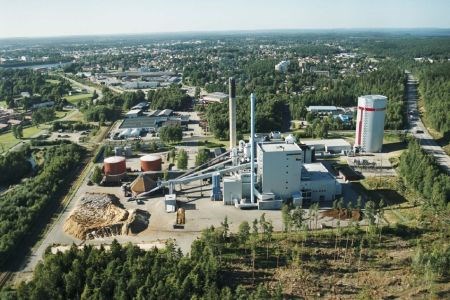The ‘Greenest city in Europe’ is not some sun-soaked southern village covered in solar panels, nor a windy costal town surrounded by a forest of wind turbines, but rather the city of Växjö, nestled in the forests of Central Sweden.
The city gained the bragging rights to such a title in 2007, when it was awarded the Sustainable Energy Europe Award by the European Commission for its work to reduce its CO2 emissions by 32 per cent per capita between 1993 and 2007, greatly exceeding Kyoto requirements. They were able to achieve such impressive reductions by using the most locally available source of energy, biomass for nearly all of their heating needs, and much of their electrical energy needs.
In 1979, the region was entirely reliant on imported fossil fuels. Over the next three decades, a series of central combined-heat and power (CHP) plants were built, and the fuel mix was quickly transitioned to become almost entirely based on renewable biomass from the surrounding region. The city itself has 54,000 inhabitants, over 90 per cent of whom are connected to the central heating grid. In some of the smaller surrounding communities, similar systems were set up. The goal is to reduce overall emissions by 50 per cent compared to 1993 by 2010.
These impressive results and lofty ambitions have made Växjö a biomass energy research hub. The city is now home to the Bioenergy Group in Växjö AB, a research group which facilitates cooperation between biomass research at Växjö University and local industry partners. The city was also selected as the site for the European Centre for Biomass Gassification, which will research and develop manufacturing processes for producing DME (Di-methyl-ether) and other bio-fuels. Växjö is also the test site of Volvo’s heavy duty DME vehicles. There has been keen international interest in the city’s heating system. Technologies such as biomass boilers developed there have already been implemented in Japan as well as elsewhere in Europe.
In 2005, the city became part of a program to become a model city in terms of energy systems. In addition to the current heating systems, construction of highly efficient housing units using local materials has begun. Many of the buildings are essentially heated by passive means, requiring heating only on the coldest days. The designs are relatively innovative; walls have nearly one meter of insulation, and even the mid-rise apartments (up to 8 stories) are built using structural wood beams.
Being one of the first to attempt such a transformation has greatly benefited the city, but it also serves as a tremendous learning experience for others. Ulf Johnsson, technical director for Växjö Energy AB, estimates that by making use of the experience and skills developed, they could reduce the time required to get to their situation (goal) by five to 10 years.
Driving around the countryside outside Växjö you can almost forget one is no longer in Northern Ontario, the landscape of gently rolling forested hills and numerous lakes is the same as what one might see from Highway 11 or 17. The natural resources and demographics are virtually identical.
Växjö could be any number of Northern cities; all they did was decide to use their local resources to meet their energy needs in a sustainable way.




